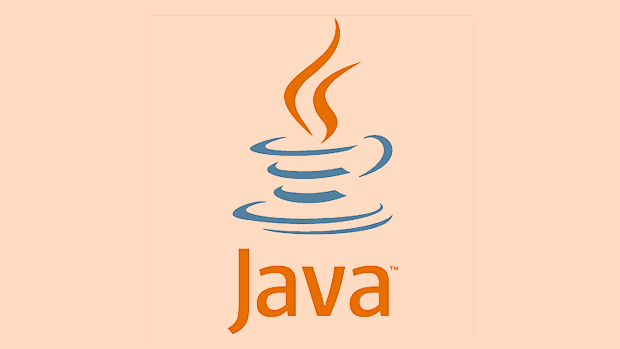How to generate a random number in Java?
Jul 12, 2025 am 12:07 AMThere are four common ways to generate random numbers in Java. 1. Use Math.random() to quickly obtain floating point numbers of 0~1, which is suitable for simple scenarios but cannot control seeds; 2. Use the Random class to generate multiple types of random numbers and support setting seeds, suitable for scenarios that require repeated tests; 3. It is recommended to use ThreadLocalRandom in a multi-threaded environment, which has better performance and no need to create instances manually; 4. When security needs are involved, the SecureRandom class should be used to provide stronger randomness guarantees but slower speed.

Generating random numbers in Java is not difficult. It can be achieved through several common methods, depending on what your needs are. For example, whether you want an integer or a floating point number, whether you need to specify a range, whether you need to encrypt and secure random numbers, etc.

Let’s start from several common usage scenarios and see how to generate random numbers using different methods.
Use Math.random() to quickly get a floating point number of 0~1
This is one of the easiest ways to suit scenarios where complex controls are not required. Math.random() returns a double type value greater than or equal to 0.0 and less than 1.0.

double randomValue = Math.random();
If you want to generate a number in a specific range, such as a random floating point number between 1 and 10, you can do this:
double randomBetweenOneAndTen = Math.random() * 9 1;
The meaning of this formula is: first multiply by the range difference (10 - 1 = 9), and then add the minimum value (1).
If you want integers, you can do type conversion or rounding.

- Advantages: The writing method is simple and can be done in one line.
- Disadvantages: Poor flexibility, cannot directly control seeds, and is not suitable for scenarios where repeated tests are required.
Generate more flexible random numbers using Random class
Java provides the java.util.Random class, which can generate various types of random numbers, including int, double, boolean, etc., and supports setting seeds.
import java.util.Random; Random rand = new Random(); int randomInt = rand.nextInt(100); // Generate integer double randomDouble = rand.nextDouble(); // Float between 0.0 and 1.0
You can also specify the range:
int randomInRange = rand.nextInt(50) 20; // integer between 20 ~ 69
If you need repeatable random sequences (such as for testing), you can use a constructor with seed:
Random randWithSeed = new Random(12345);
Supports generation of boolean values, arrays, and even streaming data (Java 8)
More efficient in multi-threading environment using ThreadLocalRandom
If you are generating random numbers in a multithreaded program, it is recommended to use ThreadLocalRandom , a tool class introduced in Java 7, which is specially optimized for concurrent environments.
import java.util.concurrent.ThreadLocalRandom; int randomInt = ThreadLocalRandom.current().nextInt(1, 101); // Include 1, excluding 101 double randomDouble = ThreadLocalRandom.current().nextDouble(0.0, 1.0);
- It avoids the problem of multiple threads scrambling for the same
Randominstance. - The interface is similar to
Random, but has better performance. - There is no need to explicitly create an instance, just use
current()method to get the instance of the current thread.
Small details supplement: Generate "real" safe random numbers
If your application involves cryptography or security-related logic, it is recommended to use SecureRandom class:
import java.security.SecureRandom; SecureRandom secureRandom = new SecureRandom(); byte[] randomBytes = new byte[16]; secureRandom.nextBytes(randomBytes); // Fill int randomInt = secureRandom.nextInt(100);
- It is based on a stronger source of entropy and has higher security.
- The speed is slower than the regular
Random, so it is only used when necessary.
Basically, these commonly used Java random number generation methods. Choose the appropriate method according to your usage scenario. For example, you can use Math.random() for rapid prototype development, use Random for general purposes, and use ThreadLocalRandom for concurrent environments. If you have high security requirements, use SecureRandom .
The above is the detailed content of How to generate a random number in Java?. For more information, please follow other related articles on the PHP Chinese website!

Hot AI Tools

Undress AI Tool
Undress images for free

Undresser.AI Undress
AI-powered app for creating realistic nude photos

AI Clothes Remover
Online AI tool for removing clothes from photos.

Clothoff.io
AI clothes remover

Video Face Swap
Swap faces in any video effortlessly with our completely free AI face swap tool!

Hot Article

Hot Tools

Notepad++7.3.1
Easy-to-use and free code editor

SublimeText3 Chinese version
Chinese version, very easy to use

Zend Studio 13.0.1
Powerful PHP integrated development environment

Dreamweaver CS6
Visual web development tools

SublimeText3 Mac version
God-level code editing software (SublimeText3)

Hot Topics
 Applying Semantic Structure with article, section, and aside in HTML
Jul 05, 2025 am 02:03 AM
Applying Semantic Structure with article, section, and aside in HTML
Jul 05, 2025 am 02:03 AM
The rational use of semantic tags in HTML can improve page structure clarity, accessibility and SEO effects. 1. Used for independent content blocks, such as blog posts or comments, it must be self-contained; 2. Used for classification related content, usually including titles, and is suitable for different modules of the page; 3. Used for auxiliary information related to the main content but not core, such as sidebar recommendations or author profiles. In actual development, labels should be combined and other, avoid excessive nesting, keep the structure simple, and verify the rationality of the structure through developer tools.
 The requested operation requires elevation Windows
Jul 04, 2025 am 02:58 AM
The requested operation requires elevation Windows
Jul 04, 2025 am 02:58 AM
When you encounter the prompt "This operation requires escalation of permissions", it means that you need administrator permissions to continue. Solutions include: 1. Right-click the "Run as Administrator" program or set the shortcut to always run as an administrator; 2. Check whether the current account is an administrator account, if not, switch or request administrator assistance; 3. Use administrator permissions to open a command prompt or PowerShell to execute relevant commands; 4. Bypass the restrictions by obtaining file ownership or modifying the registry when necessary, but such operations need to be cautious and fully understand the risks. Confirm permission identity and try the above methods usually solve the problem.
 Differences Between Callable and Runnable in Java
Jul 04, 2025 am 02:50 AM
Differences Between Callable and Runnable in Java
Jul 04, 2025 am 02:50 AM
There are three main differences between Callable and Runnable in Java. First, the callable method can return the result, suitable for tasks that need to return values, such as Callable; while the run() method of Runnable has no return value, suitable for tasks that do not need to return, such as logging. Second, Callable allows to throw checked exceptions to facilitate error transmission; while Runnable must handle exceptions internally. Third, Runnable can be directly passed to Thread or ExecutorService, while Callable can only be submitted to ExecutorService and returns the Future object to
 How Java ClassLoaders Work Internally
Jul 06, 2025 am 02:53 AM
How Java ClassLoaders Work Internally
Jul 06, 2025 am 02:53 AM
Java's class loading mechanism is implemented through ClassLoader, and its core workflow is divided into three stages: loading, linking and initialization. During the loading phase, ClassLoader dynamically reads the bytecode of the class and creates Class objects; links include verifying the correctness of the class, allocating memory to static variables, and parsing symbol references; initialization performs static code blocks and static variable assignments. Class loading adopts the parent delegation model, and prioritizes the parent class loader to find classes, and try Bootstrap, Extension, and ApplicationClassLoader in turn to ensure that the core class library is safe and avoids duplicate loading. Developers can customize ClassLoader, such as URLClassL
 Exploring Different Synchronization Mechanisms in Java
Jul 04, 2025 am 02:53 AM
Exploring Different Synchronization Mechanisms in Java
Jul 04, 2025 am 02:53 AM
Javaprovidesmultiplesynchronizationtoolsforthreadsafety.1.synchronizedblocksensuremutualexclusionbylockingmethodsorspecificcodesections.2.ReentrantLockoffersadvancedcontrol,includingtryLockandfairnesspolicies.3.Conditionvariablesallowthreadstowaitfor
 Handling Common Java Exceptions Effectively
Jul 05, 2025 am 02:35 AM
Handling Common Java Exceptions Effectively
Jul 05, 2025 am 02:35 AM
The key to Java exception handling is to distinguish between checked and unchecked exceptions and use try-catch, finally and logging reasonably. 1. Checked exceptions such as IOException need to be forced to handle, which is suitable for expected external problems; 2. Unchecked exceptions such as NullPointerException are usually caused by program logic errors and are runtime errors; 3. When catching exceptions, they should be specific and clear to avoid general capture of Exception; 4. It is recommended to use try-with-resources to automatically close resources to reduce manual cleaning of code; 5. In exception handling, detailed information should be recorded in combination with log frameworks to facilitate later
 Asynchronous Programming Techniques in Modern Java
Jul 07, 2025 am 02:24 AM
Asynchronous Programming Techniques in Modern Java
Jul 07, 2025 am 02:24 AM
Java supports asynchronous programming including the use of CompletableFuture, responsive streams (such as ProjectReactor), and virtual threads in Java19. 1.CompletableFuture improves code readability and maintenance through chain calls, and supports task orchestration and exception handling; 2. ProjectReactor provides Mono and Flux types to implement responsive programming, with backpressure mechanism and rich operators; 3. Virtual threads reduce concurrency costs, are suitable for I/O-intensive tasks, and are lighter and easier to expand than traditional platform threads. Each method has applicable scenarios, and appropriate tools should be selected according to your needs and mixed models should be avoided to maintain simplicity
 What is the purpose of the `static` keyword in Java?
Jul 05, 2025 am 02:36 AM
What is the purpose of the `static` keyword in Java?
Jul 05, 2025 am 02:36 AM
Static keywords are used in Java to create variables and methods that belong to the class itself, rather than instances of the class. 1. Static variables are shared by instances of all classes and are suitable for storing data shared by all objects, such as schoolName in the Student class. 2. Static methods belong to classes and do not depend on objects. They are often used in tool functions, such as Math.sqrt(), and can only access other static members. 3. Static code blocks are used to perform initialization operations when class loading, such as loading libraries or setting logs. 4. Static inner classes can be instantiated independently of the external class, but non-static members of the external class cannot be accessed. Rational use of static can effectively manage class-level resources and behaviors.






